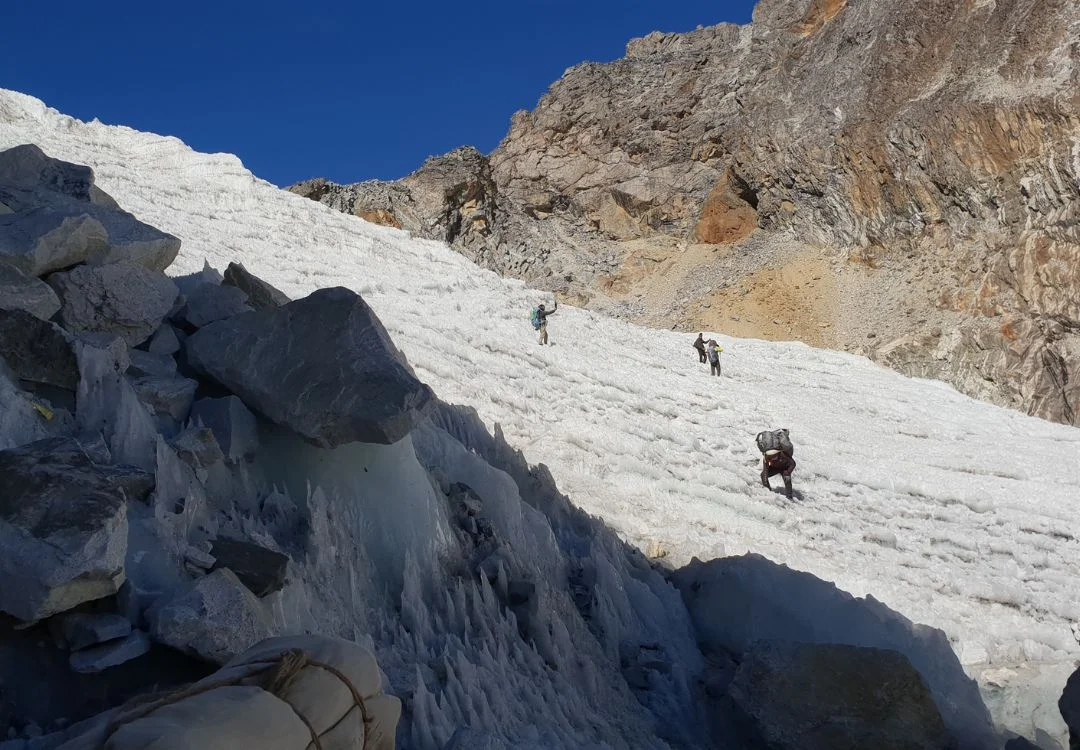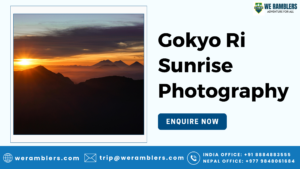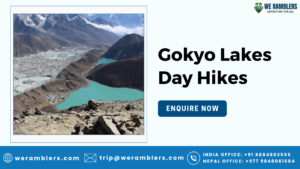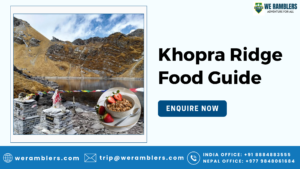Rescue During Gokyo Lakes Trek: A Complete Guide to Staying Safe in the Everest Region
The Gokyo Lakes Trek is one of the most stunning high-altitude adventures in the Everest region, taking trekkers through serene turquoise lakes, Ngozumpa Glacier (the largest glacier in Nepal), and the iconic Gokyo Ri (5,357m) offering panoramic views of Everest, Lhotse, Cho Oyu, and Makalu. However, this beauty comes with formidable challenges.
Rising to elevations above 5,000 meters, the trek tests your physical endurance and adaptation to altitude. With rugged terrain, icy passes, and remote settlements, altitude sickness is a real and present danger. Fatigue, severe weather shifts, and limited access to immediate medical facilities make rescue During Gokyo Lakes Trek a vital subject for any well-prepared adventurer.
Types of Emergencies During the Gokyo Lakes Trek
Despite preparation, trekkers sometimes encounter conditions that require swift evacuation. Common emergencies include:
1. Acute Mountain Sickness (AMS)
- AMS typically starts above 2,500 meters and is a leading cause of emergency evacuation.
- Symptoms: Headache, nausea, dizziness, loss of appetite, insomnia.
- If untreated, AMS can develop into HAPE (High Altitude Pulmonary Edema) or HACE (High Altitude Cerebral Edema), both life-threatening.
2. Injuries
- Slippery moraine trails and ice patches near the glacier zone can result in fractures, sprains, or soft tissue injuries.
- A twisted ankle at 4,500m can derail the entire expedition and necessitate a rescue from Gokyo Lakes Trek.
3. Exhaustion and Dehydration
- Trekkers pushing too fast without acclimatization can suffer from extreme fatigue, risking collapse on remote trails.
4. Weather-Related Emergencies
- Sudden snowstorms, whiteouts, or landslides in the Everest region can trap trekkers or isolate them from the group.
Helicopter Evacuation Services in the Everest Region
When emergencies strike above 4,000 meters, Helicopter Rescue from Gokyo Lakes Trek becomes the most effective, and sometimes the only, way out.
How It Works:
- The evacuation request is usually initiated by the trekker’s guide or the trekking agency.
- Using satellite phones or local relay networks, the location is shared with the helicopter service providers.
- Weather permitting, helicopters can reach Gokyo within 30 minutes to 2 hours depending on the time of day and the urgency.
Coordination Process:
- On-Ground Team: Guides assess the situation and stabilize the trekker if possible.
- Aerial Team: Trained pilots navigate thin air, unpredictable terrain, and landing on temporary helipads.
- Medical Facilities: Evacuated trekkers are flown to Lukla, then Kathmandu or Pokhara, where partner hospitals await.
Many rescues require cooperation between private chopper services, TAAN, and Nepali Army aviation support in extreme cases.
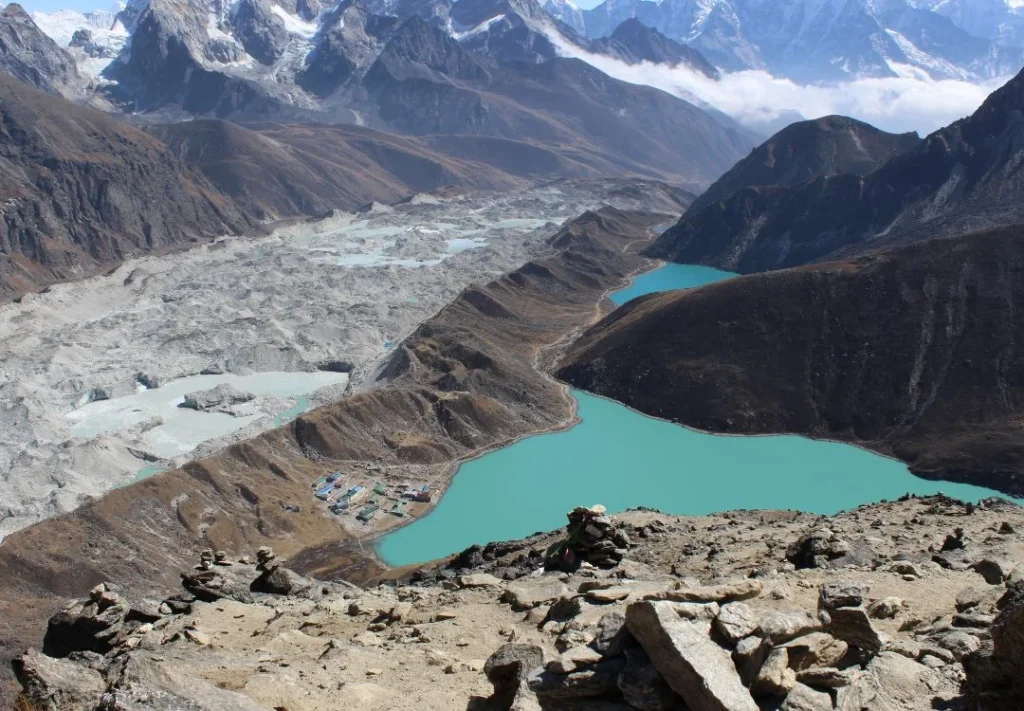
Insurance and Cost: What Every Trekker Must Know
Evacuation from the Everest region is expensive. The average Gokyo Lakes Trek Rescue Cost ranges between USD $4,000 to $6,000, depending on altitude and helicopter availability.
Why Travel Insurance is Non-Negotiable:
- Your travel insurance for Gokyo Lakes Trek rescue must include coverage up to 6,000 meters and helicopter evacuation.
- Before the trek, provide your insurance details to your trekking agency.
- Always check if the policy covers high-altitude trekking, emergency medical evacuation, and trip interruption.
Claim Process:
- Keep all documentation: Medical reports, guide’s incident report, helicopter invoice, and photographs (if possible).
- Most rescue providers coordinate directly with insurance companies for prompt evacuation, but reimbursement may still require follow-up.
We Ramblers’ Emergency Evacuation Support: Always On, Always Ready
At We Ramblers, we prioritize safety above all. Our emergency support protocols are time-tested, efficient, and designed for Himalayan terrain.
Here’s How We Keep You Safe:
- Trained Guides in wilderness first aid and AMS response.
- Satellite Phones & GPS Trackers with every group above 3,500 meters.
- 24/7 Emergency Response Line connected to chopper services and medical partners.
- Evacuation-ready Protocols including stretcher mobilization, altitude descent planning, and oxygen support.
- Hospital Partnerships in Kathmandu & Pokhara with pre-reserved emergency response beds.
Whether it’s a minor injury or a life-threatening condition, our Emergency Evacuation Support ensures no trekker is left behind.
Coordination with Authorities and Local Advisors
Effective rescues in the Himalayas are built on solid coordination with multiple stakeholders:
- TAAN (Trekking Agencies Association of Nepal): Supports verification and coordination for legitimate rescue.
- Local Police & Army Posts: Assist with difficult terrain evacuations and airstrip clearance.
- Village Development Committees (VDCs): Offer ground-level support during snowstorms or technical landings.
- Lodge Owners: Act as the first line of help for early symptom detection and communication.
Rescue documentation often includes:
- Incident report
- Medical condition statement
- Passport copy of the trekker
- Insurance policy documentation
Tips to Avoid Needing a Rescue on the Gokyo Lakes Trek
While rescues are possible, prevention is always better than intervention. Follow these safety tips to minimize risk:
- Acclimatize Properly: Follow the golden rule — “Climb high, sleep low.”
- Hydrate Frequently: Dehydration worsens altitude symptoms.
- Be Honest With Your Guide: Report headaches, nausea, or unusual fatigue early.
- Go Slow: Never race the trail — your body needs time to adapt.
- Train Before the Trek: Good fitness prepares your body for altitude stress.
- Avoid Alcohol & Smoking: These reduce oxygen absorption at high altitude.
- Carry Medication: Diamox, anti-nausea tablets, and rehydration salts are essentials.
FAQs About Rescue During Gokyo Lakes Trek
Q: How long does a helicopter rescue take?
A: It varies based on location and weather. Typically, 30 minutes to 2 hours after the request is confirmed.
Q: Where does the helicopter land?
A: On clearings near tea houses or designated helipads. Gokyo village has space for emergency landings.
Q: Will I get a refund if I’m evacuated mid-trek?
A: Most trekking agencies offer partial refunds or reschedule options, but check policies in advance.
Q: Who pays if insurance denies the claim?
A: You are liable unless pre-approved. This is why verifying insurance coverage before the trek is essential.
Q: Can I get airlifted for minor issues?
A: Only in cases where continuing the trek could worsen your condition. Guides assess before recommending evacuation.
Why Trekkers Trust We Ramblers During Emergencies
With over a decade of high-altitude trekking experience, We Ramblers has handled hundreds of successful evacuations across Nepal. Our guides undergo intensive first aid and high-altitude survival training, and we maintain real-time communication networks with helicopter operators, hospitals, and local authorities. When you trek with We Ramblers, you’re backed by a professional support system that believes every trekker deserves safety, dignity, and care in the mountains.
Trek Smart, Trek Safe with We Ramblers
Trekking the Gokyo Lakes Trail is a dream for many, but dreams can turn into danger without the right preparation. Knowing the risks, having reliable support, and being covered by comprehensive insurance can make all the difference.
With We Ramblers, you’re never alone in the Himalayas. From helicopter rescue from Gokyo Lakes Trek packages to on-ground emergency protocols, we’ve built a safety-first ecosystem around every expedition.
So pack your dreams, lace up your boots, and remember—rescue from Everest region treks is just a call away, but prevention and preparation will always be your best companions.
Contact us now for more information.

